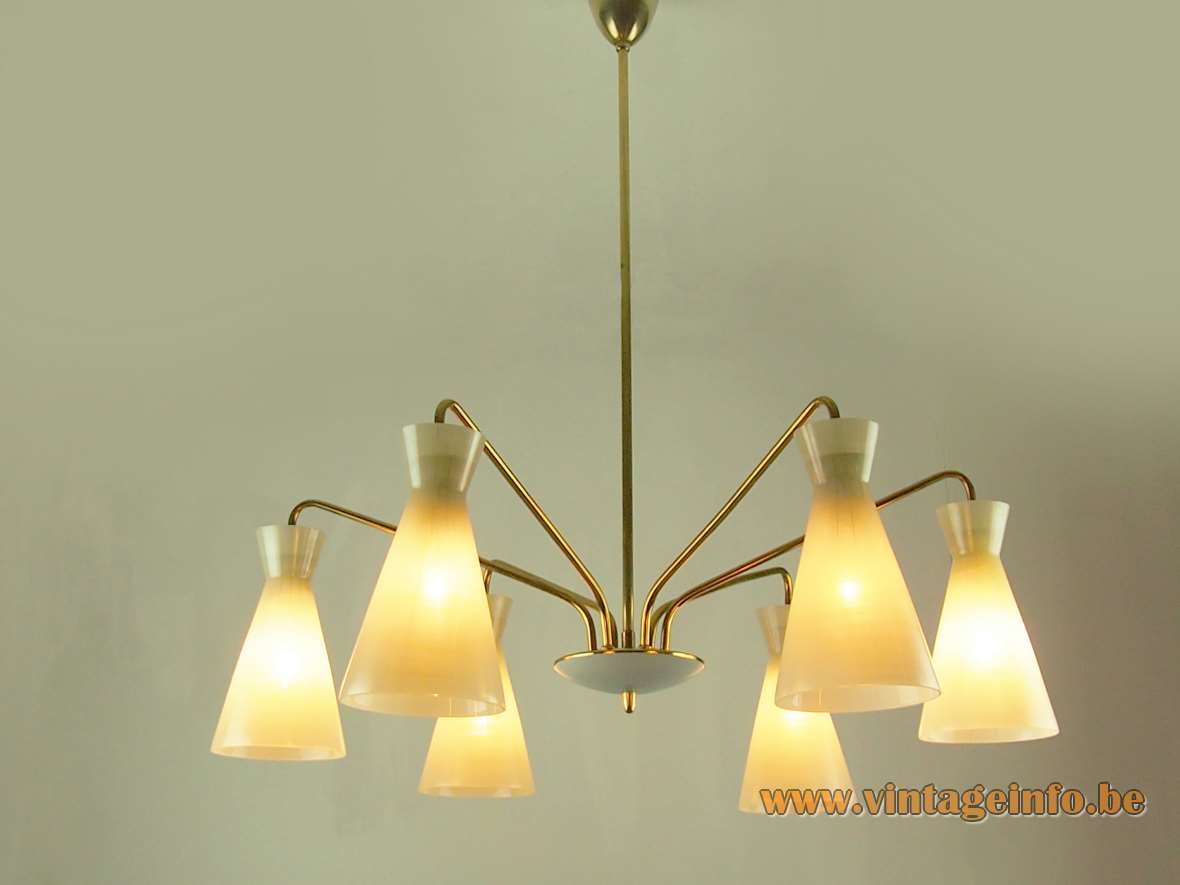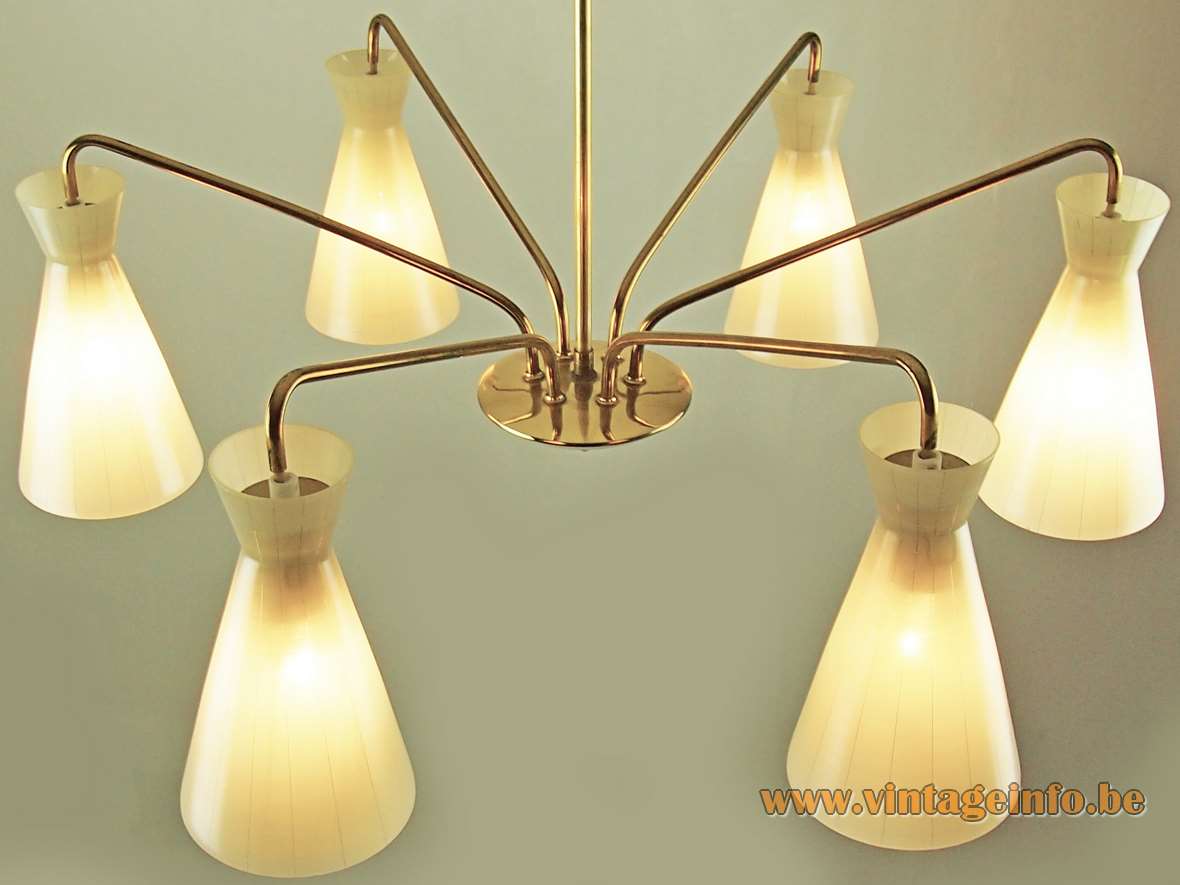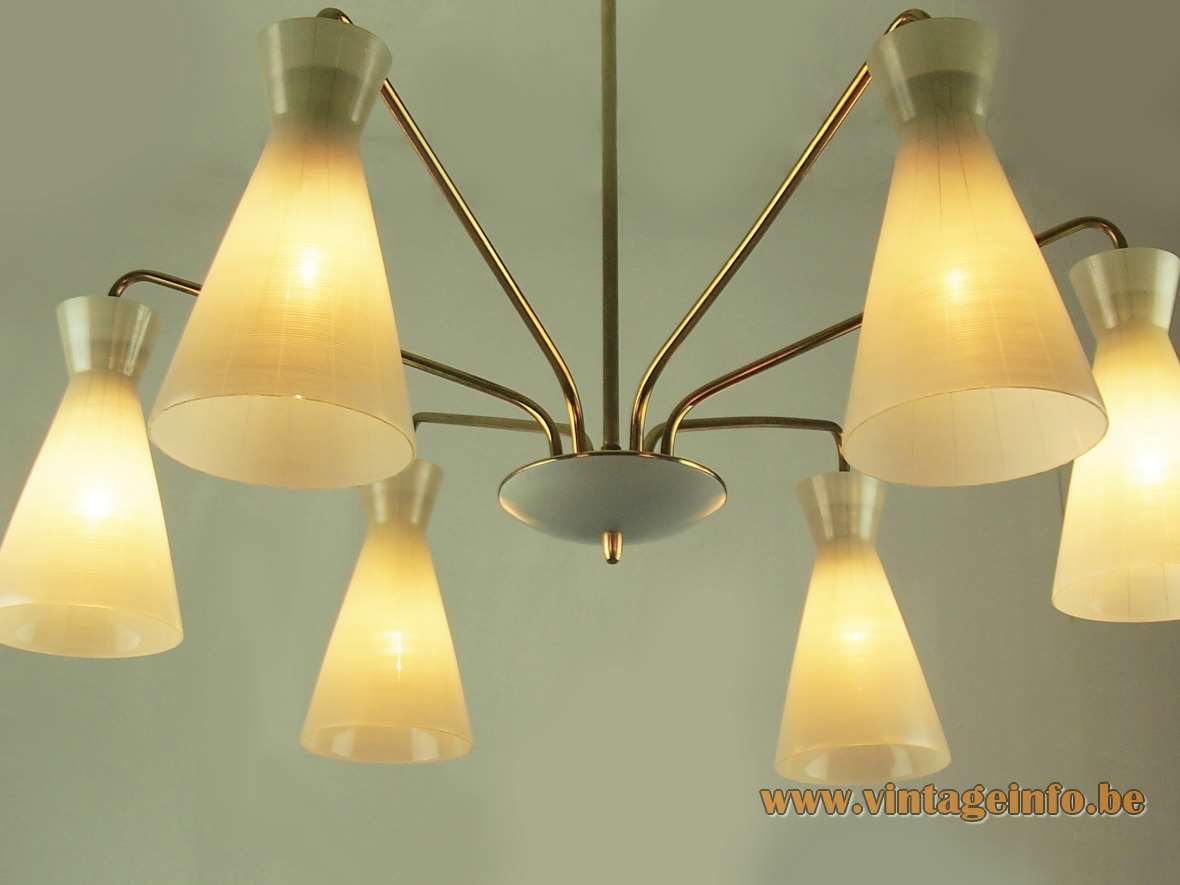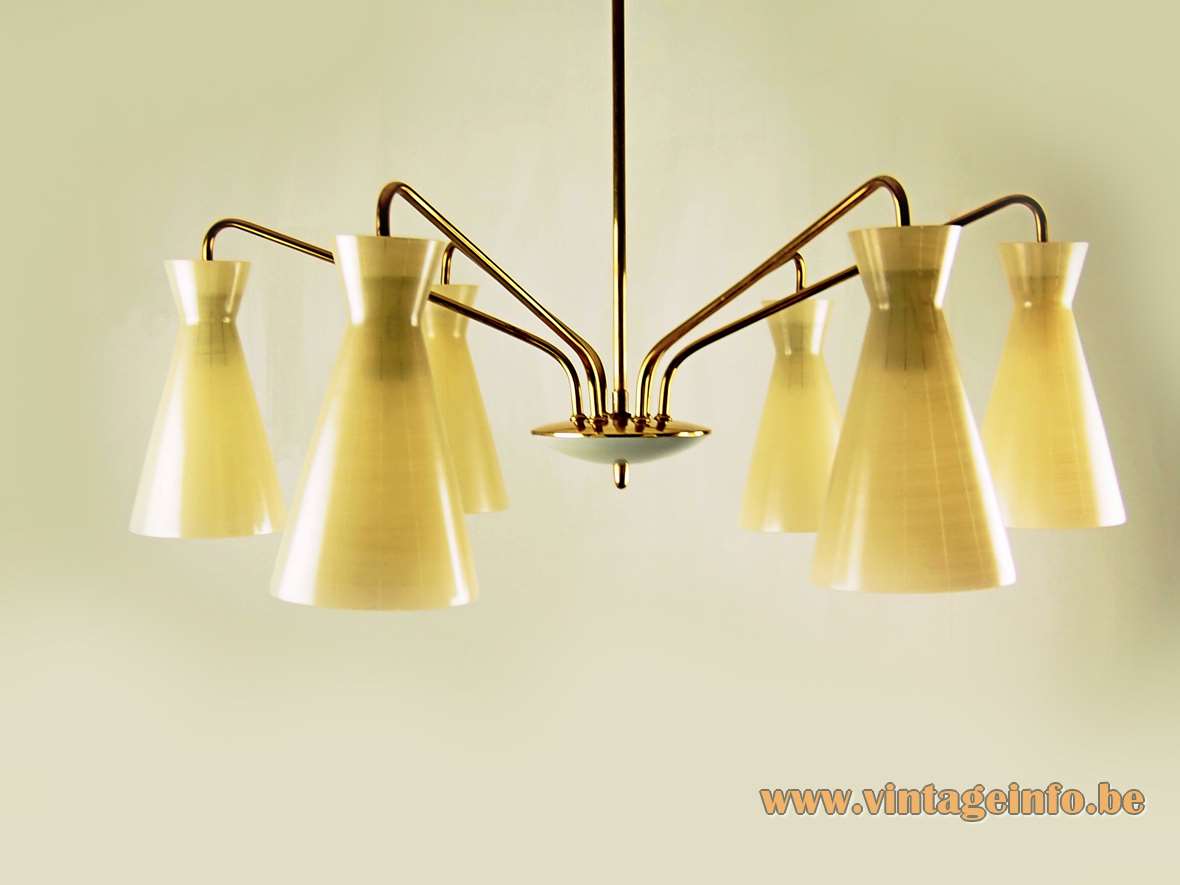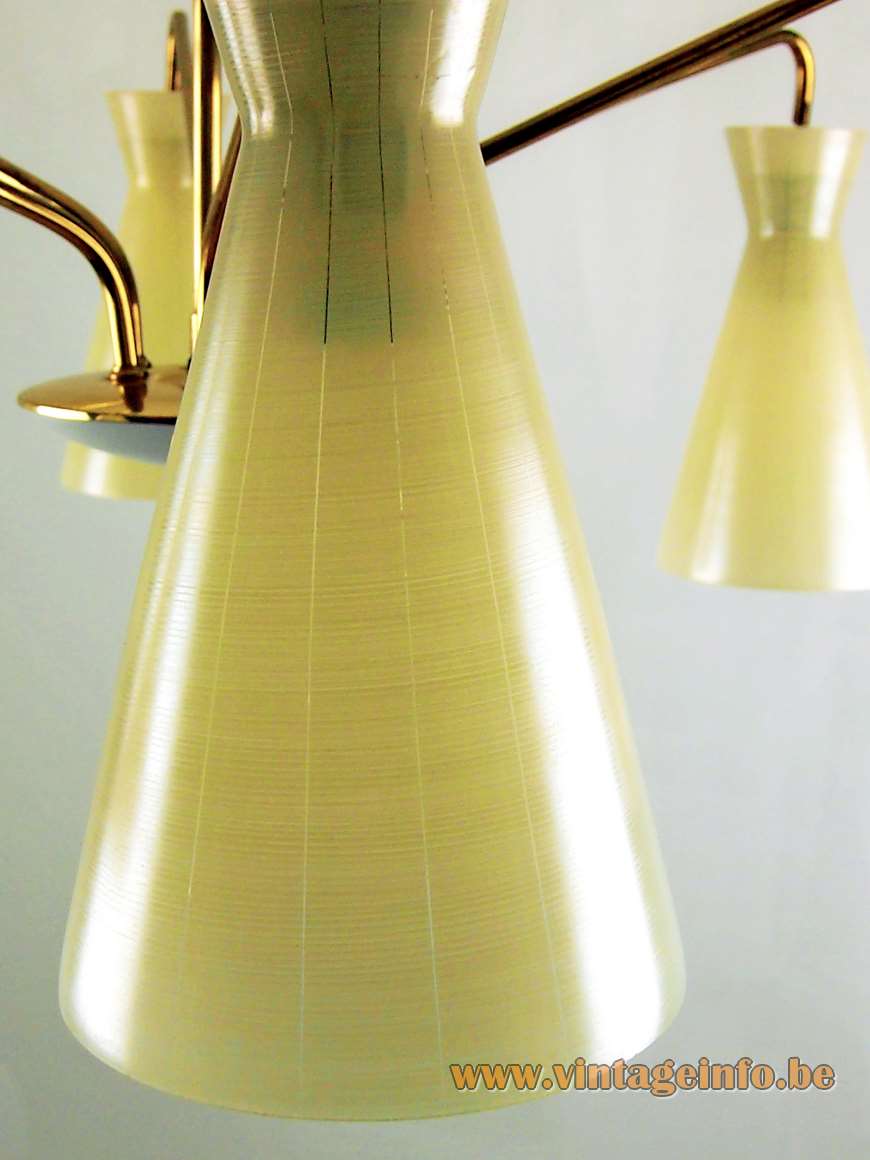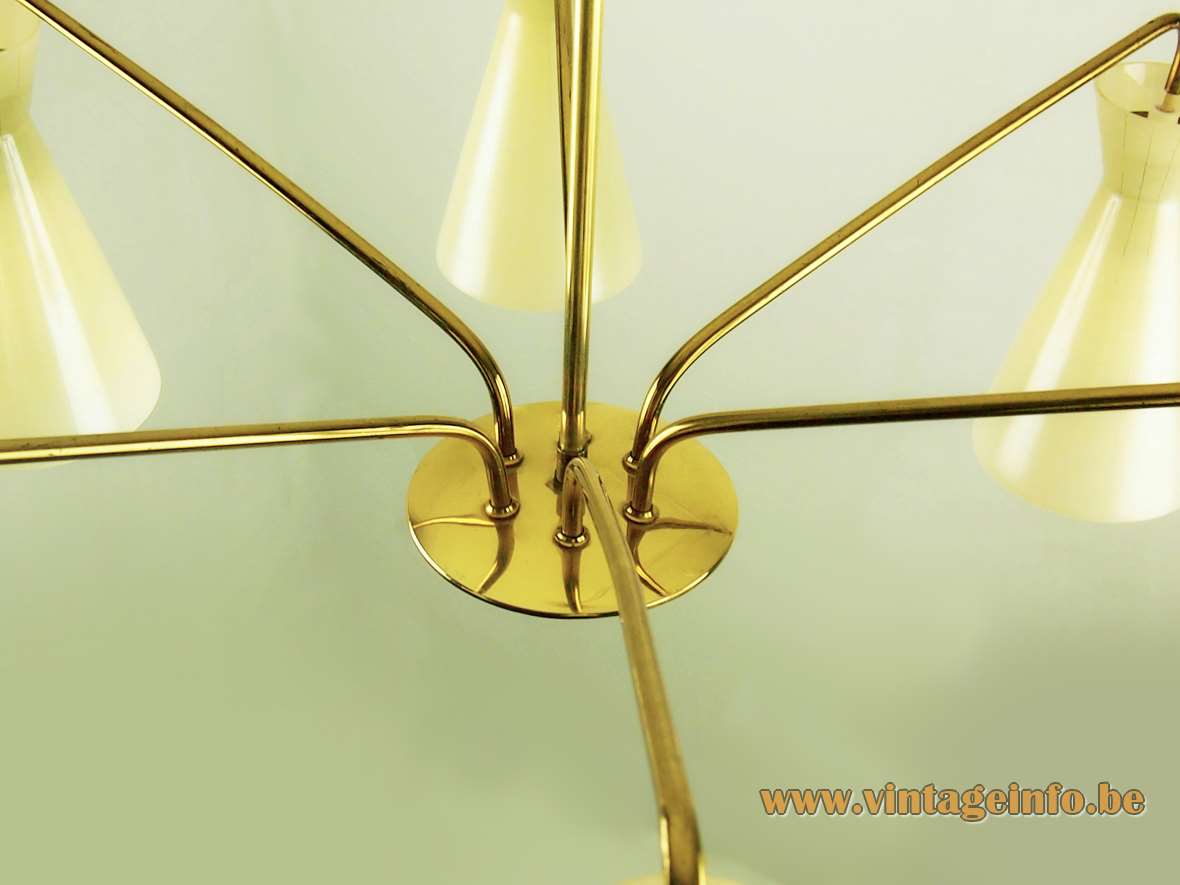1950s Diabolo Chandelier
Materials: Long brass rod and canopy. 6 curved brass rods. Vanilla white painted brass disc. Some brass parts. Striped light yellow, amber glass diabolo lampshades. 6 Bakelite E14 sockets.
Rod Length: 68 cm / 26.77”
Width: ∅ 65 cm / 25.59”
Lampshades: ∅ 13 x 20 cm / 5.11 x 7.87”
Electricity: 6 bulbs E14, 6 x 40 watt maximum, 110/220 volt.
Any type of light bulb can be used, not a specific one preferred.
Period: 1950s, 1960s – Mid-Century Modern.
Designer: Rupert Nikoll – attributed.
Manufacturer: Beleuchtungskörperfabrik und Beleuchtungsglashütten Rupert Nikoll, Vienna, Austria. ((lighting equipment factory and lighting glassworks) – attributed.
Other versions: This 1950s diabolo chandelier exists in all probability in several variations.
Rupert Nikoll
Little is known about the Rupert Nikoll factory. The company was founded in 1908 and ended business in 1986. In 1966 it moved to Ober-Grafendorf, some 70 km / 43.5 miles from Vienna. Rupert Nikoll also had a branch in Munich, Germany since 1958.
Emil Stejnar (born 1931) is the most famous designer that worked for Rupert Nikoll. He is also from Austria. He designed numerous chandeliers, wall lamps, flush mounts and mirrors. All designed in the beginning of the 1950s. They were all decorated with crystal glass flowers. In 1957, goldsmith and silversmith Stejnar moved to Sweden. He married and returned to Austria in 1968. His designs were produced for decades.
Rupert Nikoll is also known for the “Sumatra” floor lamp. Made in brass with an organic lampshade. Several lamps were produced with lampshades in this form together with organic materials such as flowers, grasses and cane. Few are left and many have disappeared due to the fragility of the lampshades. You can find a beautiful example here on Vintageinfo.
Diabolo
Diabolo is the name given to the shape of the lampshade. The diabolo lampshades were very popular in the 1950s. You can find several examples here on Vintageinfo.
The diabolo, some yo-yo, has it’s origin in China. It’s a double-coned bobbin that can be twirled, tossed, and caught on a string secured by two sticks, one held in each hand. The first diabolo’s were made of bamboo and they made some whistling sound.
In the eighteenth century, the diabolo became known in England and France. The term “diabolo” was made up by French engineer Gustave Phillippart, who developed the modern diabolo in the early twentieth century and he was re-released. Since then, he has been widespread.
There are many types of diabolo lamps. Some say the first design for a lamp was by the French designer Pierre Guariche.
Many thanks to Ger for the beautiful pictures and the enthusiasm.
